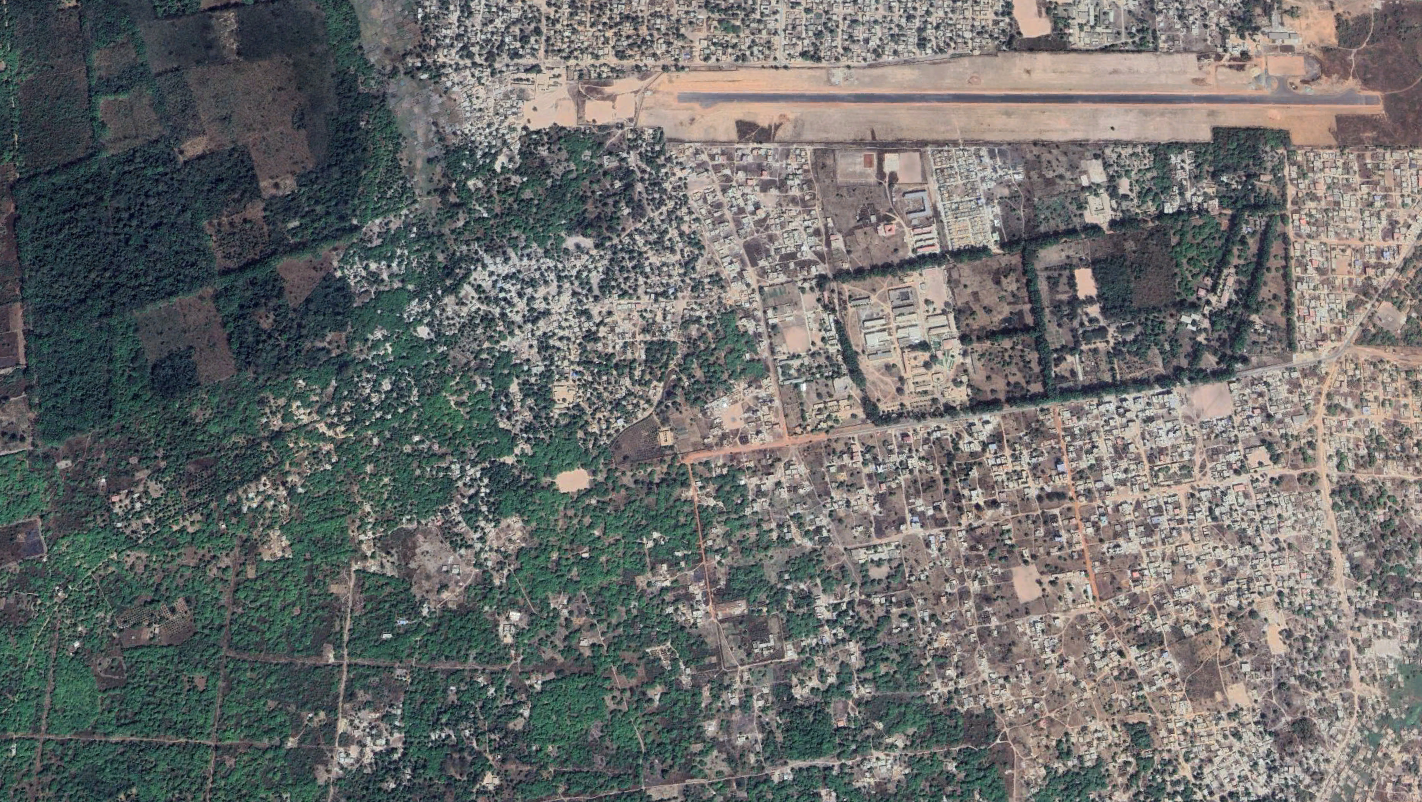
Bassirou on Ziguinchor’s outskirts
Bassirou (b. 2002) is a student at the University of Ziguinchor. He lives with his aunt in Ziguinchor although the rest of his family is spread between Dakar and Bignona. An avid musician, he likes to perform at local nightclubs during the weekends or to relax and watch the sunset over the Casamance river, contemplating plans of going abroad.

I met Bassirou on the street outside the university campus. Bassirou, a young student, lived in the Diabir neighbourhood and we had met a few times before. He asked if I liked art and wanted to see some that was made in his house, to which I accepted. He took me to Diabir, right behind the Assane Seck University. The neighbourhood, a former village on the outskirts of Ziguinchor, is a maze of single-storey houses built between trees that have seemingly been around for decades if not centuries and small fields for cattle or crops, connecting each other by a network of unpaved roads and trails in between the bush.
Bassirou said quietly when he reached his house. He was well aware of the purpose of my research so I knew that he was referring to the creation of the MFDC in Diabir. We walked inside and I greeted Bassirou’s aunt, who was watching television before we went to Bassirou’s room. We had a chat about how his studies were going before I asked him to tell me more about his neighbourhood. Bassirou said that Diabir used to be a “rebel base” before Ziguinchor expanded and started to enclose most of Diabir, forcing the rebels to set up new bases closer to the border of Guinea-Bissau to avoid military raids. He explained how Diabir used to be the perfect place for guerilla attacks as it was close to the city and the main road to Guinea-Bissau and because it was easy to hide amongst the civilians or in the bush. I asked if he had any experiences with such attacks, which he denied, saying that most of it happened before or shortly after he was born. He referred to his aunt, watching television in the other room, saying that she knew more about it but rarely spoke about the past,
I asked him if he knew more about what happened to his family before his birth. Bassirou said that he comes from a Wolof family but that they have lived for several generations in the Casamance, he did not know exactly when they arrived in the region. Most of his family lives in or around Bignona but he moved in with his aunt in Diabir after the death of his mother, also making it easier to get access to education. According to Bassirou, most of his family, including his aunt, lived in villages in the Casamance but that they moved to Bignona and Ziguinchor at an unspecified moment in time. Although Bassirou did not know at what point this move happened, I would assume, given what Bassirou has previously and having a rough estimation of his aunt’s age, that this could have been due to the conflict. Of course, I could not verify these suspicions as I did not feel that it was my place to ask Bassirou’s aunt about these events if it was already a sensitive topic within the family.\
Instead, I asked if he could still feel any effects of the conflict in his daily life or in his surroundings. Bassirou said that this was not the case. He did add,
It would not surprise him if some of the people living in Diabir were “bandits” as he referred to them, saying that by going south from Diabir, you would enter the sacred forest of Djibelor and would then reach the border. I asked Bassirou what his thoughts were about the conflict. He replied in a rather nonchalant way, saying that it is not his conflict so that he does not really care about it. Adding that all he wanted to do is finish university and then move to Dakar, or even better, Europe to start his own business there. We rounded up our conversation as Bassirou had to prepare himself to go to the mosque for prayer. As I walked back alone through Diabir towards the main road, I did notice an above-average amount of anti-government posters and graffiti according to my observations throughout Ziguinchor, calling to liberate Sonko and for Sall’s government to step down.
“This is where it started”
“c’est ici ou tout a commencé”
“they were quite traumatised”
“ils étaient assez traumatisés”
“there are rumours around that there a still bandits living in Diabir. It would seem logical but nobody will tell”
“il y a des rumeurs qu’il y a encore des bandits qui vivent a Diabir. Ça parait logique mais personne le dira”

Poster calling for the release of Ousmane Sonko in Diabir
Evolution of the Diabir neighbourhood (left, slightly off-centre) between 2004 and 2024, showing a massive increase of urban development surrounding the original village.
Source: Google Earth
Next: Ibrahim on regional identity




